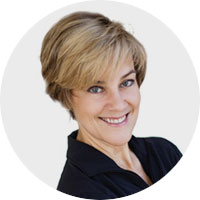Get Easy Health Digest™ in your inbox and don’t miss a thing when you subscribe today. Plus, get the free bonus report, Mother Nature’s Tips, Tricks and Remedies for Cholesterol, Blood Pressure & Blood Sugar as my way of saying welcome to the community!
Why strength matters most to women 50+

Weight lifting? You? Me?
Yes, and here’s why…
Strength training can lengthen your life. In fact, in one study, people who strength trained outlived other people who did just about every other exercise under the sun but strength training. So there is definitely something special about boosting your strength…
Strength is required for a range of daily activities from opening jars and climbing stairs to lifting heavy bags of groceries. You need your strength to dig in your garden, do your yard work or and ride your bike up a hill.
Strength is even a component of getting out of a chair. Hopefully, you are far from thinking that’s a workout — but keeping what you’ve got now and planning for the future is important. It’s easier to build strength now than it will be in 10 years or 20, no matter what your age is at this moment…
By the time you’re 50, keeping your strength should be a big concern. That’s because changes that lead to sarcopenia — defined as significant loss of skeletal muscle — began in your 30s and 40s.
So, if you haven’t thought about it already, it’s time to seriously look at stopping your muscle loss — or at least — slowing it down… and strength training is the way to go.
Should you lift heavy or light?
Recent research has shown that as long as you lift to fatigue (tiring your muscles), lifting lighter weight can result in changes in hypertrophy — an increase in the size of your skeletal muscle. That means you will see muscle growth, but don’t let that scare you. As a female, particularly a female over 50, you don’t have enough testosterone to get big. Bulk, even if it was a challenge for you in your younger years, is highly unlikely.
So, if seeing the baby bicep bump on your upper arm when you’re sleeveless is your primary goal, then light weights may be your end game. However, if you also want to be stronger, it’s going to take heavier weight training regularly.
Considering all that, a reasonable progression is required to safely bring you to a point where lifting a weight so heavy you would fatigue at 10 or fewer repetitions is possible.
A recent study published in the Journal of Strength and Conditioning found that lifting at 80 percent of 1-rep max (you would fatigue at 10) and 30 percent (you would fatigue at approximately 35) increased hypertrophy in size but muscular strength in only the subjects that lifted 80 percent.
If that sounds complicated, check out this simple chart of progression from a recent episode of Flipping 50 TV.
Is bone density a goal? The path to bone density is specific and it’s not enough to simply lift weights or do weight-bearing exercise, though they are indeed a start.
There is evidence of bone density improvements in subjects using lighter weight during the first six months of resistance training. Once you’ve adapted to any stress, it will take additional stress (weight) to continue progress. This Minimal Effective Stress (MES) refers to the fact that if you, for example, walk regularly, simply walking more walking or continuing to walk does not increase the bone-density effect. That’s a basic fitness principle called overload. You need additional stress on the bones in order for them to positively respond.
Lifting light weights compared to lifting no weights will work for a period of time. In fact, it’s safer to begin that way. Then, however, you’ll need to increase the weight if you safely can, based on your personal joint and muscle needs, to overcome your new MES.
Reaching fatigue is emerging as the key to best bone and muscle response. A fitness professional can’t tell you how much weight to lift, but your body will tell you when you’ve reached fatigue and you can adjust your strength training as you progress.
Editor’s note: Are you feeling unusually tired? You may think this is normal aging, but the problem could be your master hormone. When it’s not working, your risk of age-related diseases skyrockets. To reset what many call “the trigger for all disease” and live better, longer, click here to discover The Insulin Factor: How to Repair Your Body’s Master Controller and Conquer Chronic Disease!













